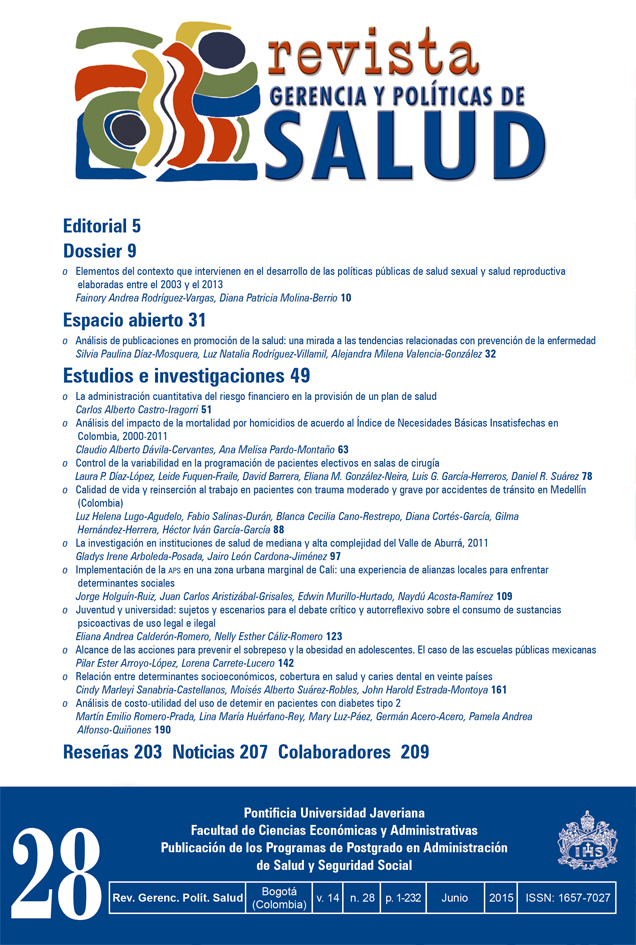Resumen
Objetivo: establecer la relación entre determinantes estructurales socioeconómicos, cobertura del sistema de salud y caries dental en veinte países. Métodos: análisis ecológico mixto de datos secundarios de veinte países. Los criterios de inclusión fueron países que presentaran tres valores de cop(cariados, obturados, perdidos) de las últimas cuatro décadas. Las variables independientes fueron: gasto total en salud, gasto sanitario público, índice de pobreza, tasa de alfabetización de adultos, tasa de mortalidad materna, tasa de mortalidad en menores de cinco años y esperanza de vida al nacer. Resultados: la caries dental muestra un valor estable (cop2,4) desde 1990, con tendencia a disminuir en países más desarrollados y aumentar en los menos desarrollados. Conclusión: los países se clasificaron en tres grupos: universalistas (con mejores los indicadores), dualista y excluyentes (con peores condiciones socioeconómicas). En los países dualistas y excluyentes no se encontró asociación entre prevalencia de caries y factores determinantes socioeconómicos.
La revista Gerencia y Políticas de Salud se encuentra registrada bajo la licencia Creative Commons Reconocimiento 4.0 Internacional. Por lo tanto, esta obra se puede reproducir, distribuir y comunicar públicamente en formato digital, siempre que se reconozca el nombre de los autores y a la Pontificia Universidad Javeriana. Se permite citar, adaptar, transformar, autoarchivar, republicar y crear a partir del material, para cualquier finalidad (incluso comercial), siempre que se reconozca adecuadamente la autoría, se proporcione un enlace a la obra original y se indique si se han realizado cambios. La Pontificia Universidad Javeriana no retiene los derechos sobre las obras publicadas y los contenidos son responsabilidad exclusiva de los autores, quienes conservan sus derechos morales, intelectuales, de privacidad y publicidad.
El aval sobre la intervención de la obra (revisión, corrección de estilo, traducción, diagramación) y su posterior divulgación se otorga mediante una licencia de uso y no a través de una cesión de derechos, lo que representa que la revista y la Pontificia Universidad Javeriana se eximen de cualquier responsabilidad que se pueda derivar de una mala práctica ética por parte de los autores. En consecuencia de la protección brindada por la licencia de uso, la revista no se encuentra en la obligación de publicar retractaciones o modificar la información ya publicada, a no ser que la errata surja del proceso de gestión editorial. La publicación de contenidos en esta revista no representa regalías para los contribuyentes.


